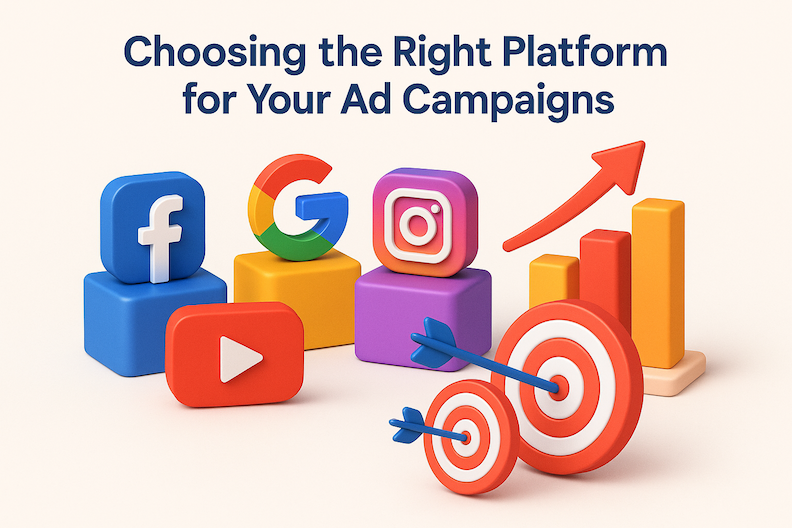Did you know businesses waste up to 50% of their ad budgets by failing to measure ROI effectively? In a world where every dollar counts, failing to track marketing ROI means you could be losing out on growth, profits, and future opportunities. This guide demystifies advertising ROI measurement , giving you actionable strategies to ensure every marketing effort drives measurable results. By the end, you’ll know how to make data-driven marketing decisions that actually boost your bottom line.
"Businesses waste up to 50% of their ad budgets by failing to measure ROI effectively.”

Explore the critical role of advertising ROI measurement in today’s competitive environment
Review practical statistics on marketing spend and ad spend efficiency
Understand how return on investment determines true marketing success
Recognize the most common pitfalls in measuring ROI in marketing
Why Advertising ROI Measurement Should Be at the Center of Every Marketing Campaign
If you aren’t rigorously measuring the return on every marketing dollar spent, your campaigns risk becoming black holes for your marketing budget. Advertising ROI measurement is not just about verifying that your marketing activities pay off—it’s how you ensure your marketing strategy fuels actual revenue growth and brand awareness. When you measure ROI in marketing, you recognize which ads spark engagement and conversions, and which get lost in the noise.
Ad spend continues to rise, yet many marketing teams still grapple with determining the real impact of that investment. According to recent surveys, less than half of marketers feel confident in tying marketing campaigns directly to revenue growth. That’s why measuring ROI must be a central pillar in your planning—helping you optimize marketing cost, adjust strategies, and focus on sales growth. Don’t leave your marketing budget to guesswork or trends; tie every marketing effort and every dollar spent to measurable outcomes.
Unlocking the Full Potential of Your Marketing ROI: What You Need to Know
Why accurate advertising ROI measurement dictates sales growth
How marketing cost, acquisition cost, and marketing efforts influence your ROI
The relationship between marketing budget decisions and marketing investment returns

Accurate advertising ROI measurement is the difference between campaigns that create explosive sales growth and those that quietly siphon away resources. Your marketing cost and acquisition cost determine how efficiently you acquire new customers—and whether your marketing efforts translate to sustainable gains. Consistently assessing ROI in marketing allows you to course-correct campaigns, spot gaps in your strategy, and make impactful changes to your marketing investment .
The right marketing budget decisions emerge from a clear understanding of where your ad spend yields the highest return. As you analyze conversion rates, customer lifetime value, and the impact of specific marketing channels, you’ll reveal winning strategies and optimal ways to allocate resources. Remember: small improvements in measuring ROI can generate big shifts in growth, profitability, and marketing efficiency.
As you refine your approach to ROI, it’s also worth considering how your social media presence can directly influence campaign outcomes. For actionable ideas on elevating your brand’s visibility and engagement, explore this social media posting offer that can help amplify your marketing efforts across key platforms.
Table: Popular Marketing Channels and Their Average ROI
Channels |
Average ROI (%) |
Key Metrics |
|---|---|---|
Social Media |
120 |
Conversion Rate, Engagement |
Email Marketing |
150 |
Open Rate, Click-Thru |
Paid Search |
100 |
Cost per Acquisition, Conversion Rate |
Display Ads |
80 |
CPM, Impressions |
Influencer Marketing |
110 |
Cost per Engagement |
Core Principles of Advertising ROI Measurement Across Multiple Marketing Channels

Applying the correct core principles across multiple marketing channels is vital for effective advertising ROI measurement . Each marketing channel, whether it’s social media, email marketing, or paid search, brings its own metrics and benchmarks. Consistency in measurement is key: set clear goals, measure the performance of every marketing campaign, and keep sight of important metrics like conversion rate, customer lifetime value, and cost per acquisition.
By treating ROI in marketing as the benchmark for growth, organizations clarify which campaigns contribute most to sales growth. High-performing marketing channels should set the standard for campaign strategy, while underperforming ones are either refined or eliminated. Data-driven marketing teams use these principles to focus both budget and energy on what really works—sharpening marketing efforts to maximize return on investment.
Why ROI in Marketing Is the Benchmark for Growth
Definitions: marketing roi, return on investment in advertising
How marketing campaigns should set ROI benchmarks
Common marketing channels and their impact on ROI
Marketing ROI is the percentage return on each dollar spent on advertising—that is, the net profit directly attributable to your marketing campaigns divided by the total marketing cost. This makes ROI the single most important metric for evaluating the performance of your marketing channels . By establishing ROI benchmarks for each marketing channel, you create an apples-to-apples metric that highlights true performance. This approach ensures that every marketing effort, whether for social media or search ads, is accountable and tied to real sales growth.
Harnessing Marketing Efforts to Drive Higher ROI
The role of sales growth in interpreting advertising roi measurement
Leveraging data from marketing efforts and social media campaigns
Measuring conversion rate and customer lifetime value
The power of measuring marketing ROI comes alive when you leverage data not just to track outcomes, but to actively boost sales growth. Marketing teams that monitor each campaign’s impact on revenue growth, customer retention, and even their brand awareness can fine-tune their strategies mid-flight. Tools that track conversion rate, acquisition cost, and customer lifetime value offer a complete picture, translating raw numbers into actionable marketing efforts.
Consider the potent effect of social media campaigns—by measuring both direct sales and engagement rates, you can expand your customer relationship and ultimately your customer lifetime value. Lean into data integration and cross-channel analysis, and turn insight into outcomes with every marketing activity you launch.
Measuring ROI in Marketing Campaigns: A Step-By-Step Framework
Identifying your marketing investment and ad spend
Choosing relevant metrics: conversion rate, acquisition cost, marketing cost
Tracking marketing spend and quantifying marketing strategy success

Building a framework for measuring advertising ROI starts with pinpointing your total marketing investment. Tally every marketing cost—from creative development and ad spend to team resources and technology fees. For each marketing campaign, select the most relevant metrics: conversion rate, acquisition cost, and the overall marketing spend. These help you quantify the real impact of your marketing efforts on sales growth and customer relationship.
Next, implement consistent tracking processes using digital analytics tools and dashboards to track ad performance and ensure every dollar is accounted for. Compare the results across marketing channels—does social media deliver more for each dollar than display ads? Use this data to quantify successes, identify under-performers, and adjust your marketing strategy. With this step-by-step process, you’ll ensure your marketing budget is driving measurable return on investment.
Visual demonstration of marketing ROI measurement in real-world campaigns
Key data to capture and analyze
Common obstacles and how to overcome them
Watching genuine campaigns evaluated in action helps clarify which data points are essential to track. Key information includes tracking ad spend, conversion rates, and customer acquisition costs in detail. You’ll also see effective methods for overcoming common hurdles, such as multi-touch attribution complexity and data silos across marketing channels.
How to Calculate Marketing ROI: Formulas, Examples, and Tools
Breaking Down the Core Formula for Advertising ROI Measurement
"The basic formula for ROI: (Net Profit / Marketing Cost) x 100”
Step-by-step calculation of marketing ROI
Real examples: calculating marketing ROI for an online ad campaign
Adjusting for marketing cost, marketing spend, and acquisition cost
Using online calculators and analytics tools

Calculating marketing ROI is straightforward but requires accuracy. To calculate your return on investment, use this ROI marketing formula: (net profit/marketing cost) x 100. Subtract total marketing cost from the revenue to determine net profit. For example, if your Google Ads campaign generates $10,000 in sales and cost $2,000 to run—your ROI would be (($10,000 - $2,000) / $2,000) x 100 = 400%.
Real-world marketing ROI calculations must consider all costs associated with a campaign—from creative assets and ad placements to software and team hours. Modern marketers often use specialized online calculators or analytics dashboards that automate much of this math and adjust for fluctuating acquisition costs, ensuring every metric is up to date and accurate.
Walk-through of calculation methods using spreadsheet templates
Case studies demonstrating ROI in marketing campaigns
Video tutorials provide hands-on examples, taking marketers through the ROI calculation process using spreadsheet templates or analytics platforms. See real case studies in action and learn to identify which campaigns deliver exceptional returns—and which demand rethinking.
Common Challenges and Solutions in Measuring Marketing ROI
Pitfalls in measuring marketing ROI across diverse marketing channels
Attribution issues in marketing campaigns (multi-touch, last touch, etc.)
The effect of customer lifetime value and indirect sales growth

Measuring advertising ROI across marketing channels comes with several pitfalls—chief among them are attribution issues and inconsistent data sources. Many marketers underestimate the impact of multi-touch attribution, where customers interact with multiple touchpoints before converting. If you only credit the “last touch,” you may under-appreciate the real value of your top-of-funnel social media or email marketing campaigns.
Another challenge is factoring in customer lifetime value and indirect sales growth. Some campaigns nurture long-term customer relationships or boost overall brand awareness, making their impact hard to quantify immediately. Overcome these hurdles by integrating all marketing data sources and applying advanced attribution models for more nuanced, accurate ROI measurement.
Overcoming Issues in Tracking Marketing Spend
Transparent allocation of marketing budget
Tracking performance across social media, email, and offline campaigns
Data integration tools to simplify measuring ROI
Solving tracking issues starts by enforcing transparency in your marketing budget allocation. Document every expense—ad spend, creative costs, and platform fees—for each campaign. Then, leverage analytics tools that unify performance data across digital (social media, email marketing) and traditional (print, events) channels. This holistic approach prevents oversights and ensures that measuring ROI reflects your true investment and marketing activities.
Data integration is transformative: when all your marketing spend, campaign results, and metrics are in one place, you can instantly compare, analyze, and act. Tools that streamline data from multiple sources are essential for any marketing team seeking an edge in maximizing return on investment.
Optimizing Conversion Rate for Improved Advertising ROI Measurement

Linking conversion rate improvements to advertising ROI measurement
A/B testing for fine-tuning marketing efforts
Improving your conversion rate is one of the fastest ways to boost your advertising ROI measurement. Even a slight increase in the percentage of users who take your desired action—filling out a form, making a purchase, subscribing—can produce dramatic gains in net profit for the same marketing spend. Consistent A/B testing of landing pages, calls to action, and ad creatives ensures marketing efforts are always fine-tuned for optimal conversion rates.
Connect every A/B test’s result to your overall ROI in marketing. Use analytics tracking to compare conversion rates and calculate marketing ROI for each variant, helping your marketing team identify which optimizations truly move the needle.
Advanced Strategies to Maximize Advertising ROI Measurement for Sustained Growth
Implementing marketing strategy adjustments based on ROI findings
Allocating marketing investment for best performing marketing channels
Leveraging marketing efforts and customer lifetime value
Prioritizing marketing cost control and efficient ad spend

Once you have reliable advertising ROI measurement, advanced strategies let you pivot from reaction to proactive optimization. Routinely review and reallocate your budget based on marketing budget ROI insights, focusing investment on the channels delivering the highest returns, and adjust your marketing strategy in real-time. This approach maximizes revenue growth by putting more ad spend behind what works and eliminating wasted marketing costs.
Don’t stop at basic metrics—factor in customer lifetime value and recurring revenue. Ensure that your marketing efforts nurture not just one-time buyers but loyal, high-value customers. Always prioritize efficient ad spend and tight control of marketing cost; every dollar spent should have a purpose and a measurable benefit.
Quote: Expert Insight
"Effective advertising ROI measurement empowers marketers to stop guessing and start investing smarter." — Marketing ROI Analyst
Top Tools and Software for Effective Advertising ROI Measurement
Overview of leading analytics and ROI measurement platforms
Comparison of essential features: dashboards, data integration, reporting
Integration tips for marketing campaigns and marketing channels

The right tools make advertising ROI measurement seamless and scalable. Popular analytics platforms such as Google Analytics, HubSpot, and Tableau offer real-time dashboards, integration with top marketing channels, and clear reporting interfaces. Compare their feature sets: does the platform support multi-touch attribution? Are dashboards user-friendly and customizable? Consider your specific marketing campaigns’ needs and ensure the tool aligns with your business goals.
Integration is vital—a good tool consolidates marketing spend, tracks conversion rates, and ties all efforts to revenue growth. Set up automated reporting and ensure every campaign, no matter the marketing channel, is accurately reflected in your ROI metrics.
List: Must-Have Features for Marketing ROI Tools
Real-time data tracking
Advanced attribution modeling
User-friendly reporting dashboards
Integration with leading marketing channels
Visual guides and platform walkthroughs can help your marketing team find the best tools, highlighting feature differences and setup requirements. Invest time in exploring these resources to streamline your advertising ROI measurement process.
Frequently Asked Questions About Advertising ROI Measurement
How do you measure ROI in advertising?
To measure ROI in advertising, use the formula: (Revenue Attributable to Ads – Ad Spend) / Ad Spend x 100. Track all relevant marketing spend and use digital analytics platforms to ensure accurate attribution.
What is a good ROI for advertising?
A ‘good’ ROI varies by industry and channel, but generally, a return on investment above 400% (a 4:1 ratio) is considered strong, meaning for every $1 spent on ads, $4 is generated in revenue.
What is the formula for ROI in ads?
ROI in ads = (Net Profit from Ads / Total Ad Spend) x 100. Clarify all expenses and revenue sources to obtain a true return on investment.
What does a 400% ROI mean?
A 400% ROI means you earned $4 for every $1 invested, resulting in four times your initial investment. This level of ROI generally indicates exceptional marketing performance.
See the Difference: Key Takeaways for Effective Advertising ROI Measurement

Advertising ROI measurement prevents wasted ad spend and clarifies marketing cost-to-benefit ratios
Tracking ROI across marketing channels and campaigns unlocks hidden sales growth
Mastering measuring ROI can revolutionize marketing strategy and budget allocation
Ready to Start Maximizing Your Advertising ROI Measurement?
"Don't let your next marketing campaign go unmeasured. Every dollar counts."
Take action: Review your current marketing spend and strategy
Begin measuring marketing ROI today with recommended tools
Invest in expert consultation to tailor an effective advertising ROI measurement framework
Take decisive steps—turn analytics into action, and fuel your revenue growth with measurable marketing ROI.
If you’re ready to take your marketing results even further, consider how a compelling visual presence can enhance your campaigns and drive even greater ROI. A professionally designed Facebook cover can be a powerful first impression, setting the tone for your brand and increasing engagement from the moment visitors land on your page. Discover how you can elevate your social media strategy and attract more attention with this free Facebook cover offer . It’s a simple yet effective way to complement your ROI-driven approach and unlock new opportunities for growth. Explore this next step to ensure your marketing investment delivers maximum impact across every channel.
Sources
https://www.hubspot.com/marketing-statistics – HubSpot Marketing Statistics
https://www.wordstream.com/blog/ws/marketing-roi – WordStream: Measuring Marketing ROI
https://www.salesforce.com/blog/marketing-roi-definition/ – Salesforce: What is Marketing ROI?
https://www.marketo.com/articles/measuring-marketing-roi/ – Marketo: Measuring Marketing ROI
https://www.bigcommerce.com/articles/roi-marketing/ – BigCommerce: ROI in Marketing Explained
To deepen your understanding of advertising ROI measurement, consider exploring the following resources:
“3 Ways to Measure Ad Campaign Effectiveness: ROI, ROMI, and ROAS” ( smartbugmedia.com )
This article provides a comprehensive overview of key metrics such as Return on Investment (ROI), Return on Marketing Investment (ROMI), and Return on Advertising Spend (ROAS), offering practical examples to illustrate their application.
“Measuring Marketing ROI: Metrics and Tools for Success” ( benchmarkemail.com )
This resource delves into essential metrics like Sales Revenue, Cost per Acquisition (CPA), and Customer Lifetime Value (CLV), and discusses tools that can aid in effectively measuring marketing ROI.
By reviewing these materials, you’ll gain valuable insights into various methodologies and tools that can enhance your ability to measure and optimize advertising ROI.
 Add Row
Add Row  Add
Add 




Write A Comment